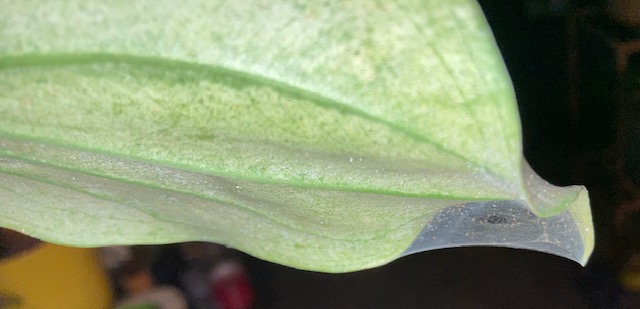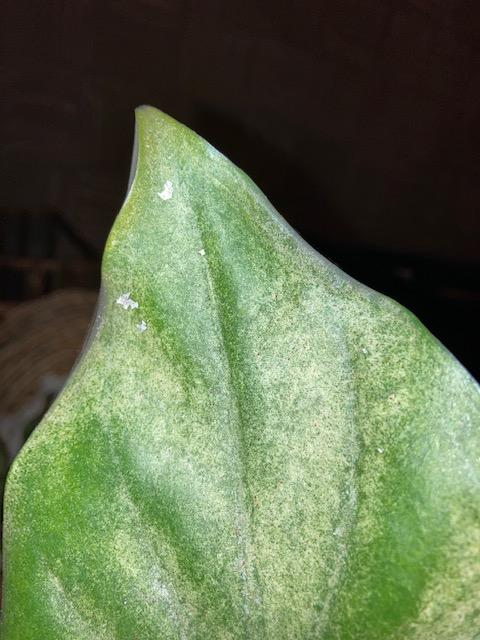Here is a reasonable website.
Identifying them is not automatic. Get a magnifying glass and have a good look. The webs are indicative. You should be able to see the adults with a good magnifier. They will look a bit like spiders, eight legs, etc.
Getting rid of them: round up the usual suspects.
Get rid of any stress on the plant. Make sure it's not near an air vent, hot or cold. Make sure it has the right water, light, soil, and fertilizer. Check if it's root bound and find out if this type of plant likes to be root bound. Remove leaf litter and any dead vegetable matter on the soil surface.
Remove any dead leaves. Think about removing any heavily damaged parts of the plant, though consider how much of the plant is safe to remove.
Dispose carefully all the stuff you remove. It may have eggs etc. on it, so make sure it is bagged up carefully. You don't want this stuff re-infecting your plants.
The web site suggests that spraying heavily with chemical poisons is a problem because it kills all insects. Some insects eat the mites.
Start with spraying plain old water. If it's possible for you, you can take it outside and give it a good wash.
Ask your local garden center what the correct non-poison thing to spray is for this type of plant. There are oils and soaps that can be effective while being non-toxic. Though even these you probably want to avoid loading up the soil. You may want to apply the soap (or whatever), wait a day or two, then give the plant a wash. Let it dry. And give it another spray with soap. Having the leaves covered with a thick layer of dried soap may not be great for the plant.
When you spray the plant, be sure to lift the leaves and get all sides, and the stems.
If you have a heavily affected portion of the plant you can spot-treat with chemical poison. Read that label carefully before buying. And again before applying. Make sure you are not poisoning yourself, your family, your pets, etc.



